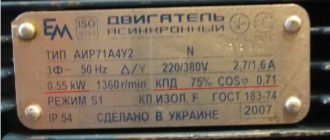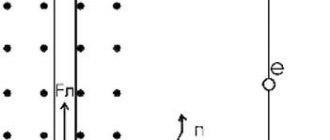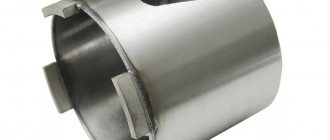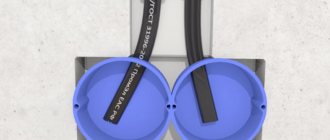SHARE ON SOCIAL NETWORKS
FacebookTwitterOkGoogle+PinterestVk
Recently, not only everyday life has become more comfortable, but also such a troublesome process as repairs, which are compared to a flood or fire. Probably, the crumbs and concrete dust that fill the room when holes are made in the walls really have something in common with a natural disaster. All this is in the recent past. Modern tools, including a concrete crown, have made the drilling process much more technologically advanced.
Crowns speed up and simplify the installation of the undercut, ensuring accuracy and precision of work
How and how to drill holes for socket boxes in concrete
It is necessary to make recesses in concrete quite often, including when performing electrical wiring. Furrows are made using wall chasers. But the places for switches and sockets are prepared in a different way.
Concrete crown - a piece of metal pipe made of tool steel
To determine the center, you first need to mark a cross on the wall using a tape measure and a pencil. Then you need to outline the intended circle, use a drill to make four holes at the intersection of the circle and straight marking lines, as well as in the center. After this, you will need a special concrete cutter, that is, a crown.
It is a piece of metal pipe, one end of which has teeth made of high-strength material, and on the second there is a flange with which the device is fixed to the rotation mechanism. The shank has a hole for attaching a centering drill, which ensures the desired direction of rotation of the crown. The drill always comes complete with a cutter. If it is necessary to make a through hole in thick walls, use an extension for a concrete crown. It significantly expands the operational capabilities of the device.
The advent of crowns greatly simplified the process of making holes. When performing work with a drill and then knocking out concrete with a chisel, not only a lot of physical effort and time is spent, but the recesses themselves turn out to be uneven.
The crown allows you to create technological holes of large and small diameters
Application
Before starting work, it is necessary to carefully and thoroughly prepare the tool for use.
Assembly
Before use, the tool must be properly assembled:
- the first thing to do is to insert a drill from Pobedit, it is secured with bolts;
- further, the bowl is attached to the thread;
- check the assembly: it should be strong, nothing should wobble.
If assembled incorrectly, it is possible to break the drill or bowl, and the craftsman may be injured.
Drilling
After assembly they start working. To do this, use a hammer drill or impact drill. A conventional drill can also be used, for example, for drilling crowns into ceramic tiles or materials of minor thickness and hardness. Drilling concrete of normal thickness with a conventional drill to the depth required for a socket will take half a day, so it is better to use a hammer drill.
First, markings are made at the site of the future socket box, and a point for the centering drill is marked. He is directed into it and drilled. In this case, use safety glasses, a respirator, and construction gloves. After drilling, remove the tool and knock out the central part. This is done with a simple hammer drill, chisel, or hammer. Diamond core bits make a hole with very smooth walls. After drilling, you need to let the crown cool down - this way the soldering will last longer.
The main types of concrete crowns for sockets
The cylindrical element of all crowns is the same, but depending on the material from which the cutting part is made, there are several types of crowns for sockets on concrete:
- with cutting elements made of hard metal alloys;
- from tungsten carbide alloys (pobedite);
- with diamond coating.
The method of operation of the hammer drill also depends on the characteristics of the cutting part. For diamond and tungsten carbide bits, a non-impact drilling method is suitable; for metal bits, in which the cutting part is shaped like teeth, an impact method is used.
A metal crown can only be used for concrete without reinforcement. The impact effect significantly reduces the service life: such crowns cannot be restored. They are used more often for domestic needs when it is necessary to make a small number of holes.
The crown can be prefabricated or a single structure
Tungsten carbide bits are also only suitable for unreinforced concrete. They are quite convenient to use when making holes in walls with a tiled surface.
Diamond-coated crowns are the most common option. They have a continuous ring coating along the edge. They can make holes in reinforced concrete without using the impact method, which is gentle on the supports of the structure to be drilled.
Helpful advice! When purchasing, you should keep in mind that using a diamond bit most often requires running water. It cools the cutting edge from overheating, while simultaneously removing sludge and dust generated during the drilling process
What should you consider when choosing?
When choosing crowns, you first need to choose a good clinic and specialist where you will receive quality services. A good specialist will tell you about the pros and cons of all types of crowns and select the most suitable ones for you.
When communicating with a doctor, it is important to talk about your preferences, the presence of allergies or discomfort when exposed to any material, and how much you are willing to pay for treatment. The following must be taken into account:
The following must be taken into account:
- if you have a limited budget, you can use metal products (especially when it comes to chewing teeth);
- Metal-free ceramics look great on individual front teeth;
- when restoring all front teeth, you can choose metal-ceramics;
- for a single crown on a front tooth, porcelain can be used;
- Plastic can be used as a last resort, as a temporary option until it is possible to install better crowns.
The operating principle of diamond bits for concrete
Diamond bits can vary in diameter, connection method to the shank, size, quality and shape of the cutting segments. Products marked “M”, that is, with a soft cutting coating, are used for working with hard concrete surfaces. They self-clean from dust generated during operation, which makes the drilling process more efficient.
Diamond core bits are used for drilling reinforced concrete using a non-impact method, which protects load-bearing structural elements
Depending on the size of the cylinder, a diamond bit can have 5 cutting elements with a diameter of 6.5 cm or 32 cutting segments for a device with a caliber of 65 cm.
For standard grades of concrete, crowns marked “C” are used, indicating that the spraying has medium hardness. Coating “T” (hard) is used when operating devices at reduced speeds.
Diamond bits for drilling concrete can work with both dry and wet drilling methods. Nozzles designed for drilling without water supply have specially shaped holes in the cylinder body that help cool the edge during operation.
Diamond bits easily pass through reinforcement. During drilling, the concrete layer is destroyed only under the edge; at the end of the work, a cylinder of stone remains in the crown.
Diamond bits for concrete are equipped with soldered wide cutting segments with diamond abrasive
When making holes of significant diameter and depth, the drilling machine can be secured using anchors. This position promotes more accurate drilling, does not create a lot of dust, prevents jamming of the cylinder and reduces the noise level. Holes for socket boxes are often made manually.
Features of the formation of recesses
Drilling holes for socket boxes occurs according to preliminary markings on the wall. Can be done in two main ways:
- Percussion (drilling). To do this, you need a powerful hammer drill and a crown with pobedite tips. The core of the hole is completely broken and falls out. It should be noted that this approach does not allow cutting reinforcement, and therefore is not applicable to reinforced concrete structures.
- Unstressed. Can be performed either with a hammer drill (in drilling mode) or with a drill. It does not create noise or vibration, is quite productive and allows you to cut reinforcement mesh. But at the same time, it should be noted that it is relatively expensive (mainly due to the equipment used). This also includes drilling wood, but its price is noticeably lower.
Standard diameters of crowns for concrete
Holes and recesses in concrete, both for domestic and industrial purposes, may be needed not only for installing sockets, but also when laying pipes, cables, etc. Consequently, the sampling parameters will not be the same, which means that tools with various dimensional indicators: with a certain diameter for socket boxes, for pipes - depending on the cross-section, for cables - in accordance with the dimensions of the route.
Each product is accompanied by instructions, which necessarily indicate the characteristics of the crown, or this information is indicated on the marking.
Crown heads have a wide range of diameters and lengths
Helpful advice! If the diameter of the socket boxes is unknown, you should take measurements with a caliper along the outer edge of the product and purchase a crown in accordance with the obtained indicator.
Concrete drill bits for hammer drills can be sold separately or as a set. Purchasing a kit is advisable if the use is not occasional. Kits, as a rule, contain 5-10 crowns of various diameters, which will allow you to make a hole of any standard size if necessary. Rigid packaging and compact placement of tools in it do not cause problems during storage and help protect products from damage associated with external environmental influences.
Types and cost of crowns for 68 mm concrete
The sizes of boxes for installing sockets and switches are standard. The recesses for them are made using 68 mm concrete crowns. This is the most common option.
For carbide (pobedite) options, the cutters are set at a negative angle of 7°. This arrangement dampens the intensity of the dynamic load on the nozzle and reduces the impact of radial and axial runout. This attachment can be used for rotary hammers with a power of 850 W or more. The SDS Plus system is used as fastening.
68 mm concrete crowns are considered the most common option
A diamond crown with a diameter of 68 mm most often has 4 coated segments. These fragments are made by mixing diamond chips and metal powder. The composition is pressed, resulting in the formation of elements of the desired shape and size, which are then baked. The power of the hammer drill to use this type of attachment must be at least 600 W, the recommended speed is 1000-3500 rpm, the type of attachment is SDS Plus.
The most commonly used bits coated with tungsten carbide have a medium grain and are recommended for working on brick, facing and tiles, foam concrete, and hard gypsum. The optimal speed when working with such attachments is 1500 rpm.
The average price of a diamond drill bit for 68 mm concrete is 7-10 thousand rubles. For pobedite species (coated with tungsten carbide) it is significantly lower - 4-6 thousand rubles. The cost of metal products is 450-600 rubles.
The hammer drill must have a power of at least 600 W to use bits with a diameter of 68 mm
Scope and methods of application of diamond bits for concrete 72 mm
A diamond bit with a diameter of 72 mm is also a fairly commonly used attachment. It is used when making recesses for socket boxes, distribution boxes, or when laying communication pipes. Used with a drill or hammer drill. Crowns of this diameter are divided into two types:
- for dry drilling;
- for wet drilling.
Nozzles recommended for dry work have oppositely placed cutouts on the sides of the cylinder, which ensure cooling of the cutting edge during operation. Options without holes in the cylindrical body require the use of running water for cooling.
Diamond bits for concrete 72 mm are used when working in non-impact mode. With their help you can drill concrete, reinforced concrete, natural and artificial stone, and ceramics. The recommended power of the rotating device is 700 W or higher, rotation speed is 1500-2000 rpm. The cutting fragments of the cutters are laser welded, which further enhances the strength of the attachment.
Using bits with a diameter of 72 mm you can drill concrete, natural and artificial stone, ceramics
Helpful advice! If during operation the rotation speed of the power tool slows down significantly, you should not increase the pressure on the bit. This will not improve efficiency, but will cause wear on the cutting edge.
Features of using crowns for 100 mm concrete
During construction or renovation work, it is often necessary to drill large holes, especially for connecting water supply and sewerage. In such cases, a crown with a diameter of 100 mm is used. You can purchase such a cutter made of hard metal. It is inexpensive - 400-450 rubles. You should not be afraid when purchasing such a cutter made in China; its performance is not inferior to its Russian counterparts.
Related article:
Attachments for an angle grinder: a variety of tools for angle grinders
Nozzles for an angle grinder. Their characteristics. Classification by material and purpose. Cutting, roughing and grinding devices. Wall chaser attachment. Grinder on a chainsaw..
Such a crown for concrete should be given time to cool, and the impact function of power tools should be used. A distinctive quality of this type of cutter is its fairly rapid wear. If it gets on the reinforcement, the cutting edge is significantly damaged, so its further use is called into question. Before starting work, you need to be sure that there are no metal elements along the drilling path.
To drill large holes, use a crown with a diameter of 100 mm
Diamond bits for drilling concrete are more durable in operation when making holes, especially for drilling large holes. If the amount of work to be done is significant, it is worth purchasing the latter option. Even at a significantly higher price (compared to metal crowns), such a cutter may turn out to be more cost-effective.
Concrete crown 110 mm: application and specifics of fastening
The diameter of metal bits does not exceed 100 mm, so to drill holes 110 mm or larger you need to purchase a diamond-coated cutter.
To work with a nozzle of this size, you will need an electric drill or hammer drill with a power of at least 100 W.
When working on concrete with a 110 mm bit, it is better to use water cooling. It will prevent overheating and falling off of the soldered edge.
Crowns with a diameter of 110 mm are attached using two types of adapters
Some difficulties may arise in the process of attaching the attachment to the power tool. The main part of the bits is compatible with rotary hammers and drills. As for options with large diameters (150 mm or more), some models require a special size of connecting elements. There are two types of cartridges, which play a major role in the mounting method:
- SDS-plus. They are part of the design of low-power tools whose weight does not exceed 5 kg.
- SDS-max. They are equipped with heavier and more powerful models of rotary hammers.
The attachment must have the appropriate shank to match the type of attachment.
The industry produces adapters that allow you to install a crown of one type on a chuck for another purpose.
To work with a 110 mm nozzle, you will need a hammer drill with a power of at least 100 W
Important! You cannot purchase and install a 110 mm concrete bit for a hammer drill with a power of 800 W or less. Using an adapter makes it possible to connect the structure, but this does not affect the operation of the engine. A large crown on a low-power power tool contributes to inevitable overheating with the ensuing consequences.
Socket box dimensions: diameter, depth, center distance
An installation box for hidden installation, designed for mounting a socket in it, is called a socket box.
Most often, the socket box has a round shape (less often square) and a standard size. The main function of the socket box is to provide a rigid and reliable mounting location for the socket inside the wall, near the plane of its surface. If you need to install a socket box, then armed with quite ordinary tools (pencil, level, spatula, brush, hammer, chisel, drill with a crown, alabaster), you can do it yourself. Follow safety precautions, first turn off the electricity supply in the panel, use the tool carefully, remember the standards - and everything will work out.
Installation of a socket box
First, make markings regarding the wire going to the future outlet. Draw a horizontal line at a short distance from the wire - this is the level of the center of the future socket, then draw a vertical line - this will be the edge of the socket box (the wire will have to go from the top to the side), finally apply the socket box and outline it with a pencil - mark the place for drilling.
The standard diameter for drilling with a crown is 68 mm, and the depth will be approximately 45 mm; this should be taken into account when choosing a crown. In general, the attachment for a drill is called a “crown for a socket box (they are available for concrete, wood, etc.), so there will be no problem purchasing it. Drill according to the markings, if necessary, during the drilling process moisten the nozzle with water so that it does not overheat too much.
The socket box is fitted to the hole and the remaining drilled material is removed using a chisel and hammer.
If a single socket box is installed, then the transition lugs from its edges are cut off so that they do not interfere with installation in the mounting hole, but if there are several sockets nearby (a block of sockets), then the necessary lugs are left to fasten several socket boxes to each other.
If the socket fits easily into the mounting hole, everything is fine. The wire should easily fit into the diagonal hole of the socket box, which is located on the side near its back wall.
When the socket fits normally and is suitable in diameter and depth, the hole is moistened with water so that the alabaster adheres better, then the solution is mixed. The solution is prepared at a ratio of 4 to 1 - 4 parts alabaster to 1 part water. Apply the solution to the socket box from all sides in contact with the wall.
Carry out the installation, position the socket box strictly in the plane of the wall so that it does not stick out or go too deep, the edges of the socket box should be at the same distance from the edges of the mounting hole. The remnants of the alabaster solution are used to mask the wire going to the socket box.
Drilling walls for socket boxes in the video:
Installing a new socket in an old socket box
Sometimes, when carrying out repairs in multi-year-old houses, it turns out that the old metal socket box is much wider than necessary, the new socket dangles in it like in a bucket, the legs do not catch. In this case, you can put a new socket box directly inside the old box.
A hard, wide old box without a bottom will require the use of alabaster mortar, as is the case when installing a socket box in a wall. If the box firmly holds the new socket box, then it is simply screwed onto the old one with self-tapping screws, remembering that the wire must be inserted from the back side and not damaged by the screws.
Block of several socket boxes
If several socket boxes are placed in a row, then this is done by mounting a block of socket boxes. The crown is taken with a slightly larger diameter - more than 68 mm, up to 80 mm - the mounting holes will be combined with each other, and the interaxial distance will be at least 71 mm.
They make a horizontal marking relative to the wire that will have to go from the right, then they mark the wall for drilling mounting holes, taking into account the required center distance or along the already connected socket boxes - simply circle the block.
They drill holes, remove the excess with a chisel and hammer, remove the partitions, and run the wire horizontally. The margin in diameter will help to orient the block evenly. The transition lugs perform their function here - they combine the socket boxes into a block.
Installing a socket box in drywall
Universal socket boxes for drywall have special spacer lugs that make fixing easier, and alabaster is not needed with them. A hole is drilled with a crown to suit the size of the socket box, installation is carried out, fixation is carried out with a screwdriver - that’s all. When tightened with a screwdriver, the fastening lugs expand and hold well inside thin-walled surfaces such as drywall.
The universal socket box has a distance between the fixing tabs of about 83 mm, so if a switch or socket has a larger distance between the fasteners than usual, such devices will fit well. Also, universal socket boxes can, in principle, be screwed to wood or placed in concrete by simply removing the fixing tabs.
Which is better: heated floors or radiators?
Warm floorBatteries
Installation under plaster or tiles
If the wall will be plastered or tiled in the future, this must be taken into account when installing the socket box. Make a margin of about 7 mm for the protrusion (or as much as the covering will be) so that the plane of the future wall covering coincides with the edge of the installed socket box. Thus, the socket box must be left protruding.
In general, when installing a socket box in the wall in advance, it is important to take into account the fact that it is possible that the depth of the future socket (switch) and its diameter will differ from the geometric parameters of the socket box.
The wire in the socket box must have a reserve
Despite the seeming insignificance of this aspect, a prudent installer always takes into account the fact that it is likely that in the future, when replacing an outlet or switch, it will be necessary to strip the wire or shorten it slightly. If the wire turns out to be short, then it will have to be extended, and this will be associated with increased vulnerability of the connection; it will oxidize and break faster, and will spark.
The wire is taken with a margin of about 20 centimeters, carefully twisted into a spiral or smoothly (not steeply) bent, and thus compactly fits inside the socket box. This is done, of course, so that if in the future the owners decide to update the interior, they can easily update the sockets without unnecessary hassles and problems with extensions. How to extend a short wire if the wall, say, is covered with tiles or plaster? It's easier to leave a reserve in advance.
Share this article with your friends:
Join our groups on social networks:
Crowns for concrete sockets: review of manufacturers
There is quite a large selection of crowns on the market. Among those that have confirmed high quality and good performance characteristics is Super Hard. This is an American company with representation in various regions. Nozzles with a diameter of up to 80 mm provide drilling through materials of various qualities, including reinforced concrete.
Crowns for domestic hammer drills are also in demand. The company produces three types of nozzles:
- G series. High speed and good performance for concrete grades M100-M300;
- S series. Recommended for concrete M400-M600;
- TOP series. Used when working with heavy material.
DeWalt crowns are available in all standard sizes
Crowns produced by Bosh have gained popularity and trust among consumers. They confirm excellent German quality. Nozzles with a diameter of 68 mm are especially in demand.
The DeWalt (American manufacturer) line of crowns is represented by models of all existing standard sizes. They can drill to a depth of up to 80 mm. The prices of DeWalt concrete crowns can be attributed to the middle segment. For example, a wear-resistant, popular version of a 68 mm diamond-coated nozzle will cost an average of 7,000 rubles.
Domestic cutters produced by Enkor are quite competitive. Particularly worth highlighting is model 48280. This is a diamond bit that can be used when working with all types of concrete, including reinforced concrete, as well as drilling stone and ceramics. It is recommended to work with it in shockless mode. The cylinder has holes for cooling.
Balance of price and quality: crowns for concrete “Distar”
Almost every buyer wants to purchase a quality product at the most reasonable price. Diamond-coated products of the Distar brand meet these requirements. For 25 years now, the company has been supplying the market with tools that are successfully used both in everyday life and for industrial purposes.
Distar bits can be used as attachments for different types of power tools
Diamond bits for concrete 68, 72, 82 mm are the most popular models. They have a significant service life and good drilling speed. Among this type of nozzles, most have holes for cooling, so there is no need to connect water. Diamond-coated segments have a specific shape that allows cuttings to be drained away, thereby cleaning the drill from drilling waste that reduces operating efficiency.
“Distar” crowns, depending on the characteristics of the material to be drilled, are divided into three categories:
- for ceramics and metal ceramics;
- for marble and granite;
- for concrete and reinforced concrete.
Crowns can be used as attachments for different types of power tools with torque: hand drills, rotary hammers, as well as stationary drilling machines.
Distar products have a universal adapter that ensures quick replacement and compatibility with other equipment
You can always choose a version of a product from a given manufacturer with the required shank, comparable to the design features of the electrical equipment used. For the fastening element of SDS Max, SDS Plus concrete drills from Distar, you can achieve a match with a drill or hammer drill by using a 1 ¼ UNC adapter and other types of adapters.
Helpful advice! When choosing an adapter, you must carefully read the information on the product label. If you have the opportunity to test the adapter directly when purchasing it in a store (you should take a power tool with you), it is better not to neglect this method of testing. It will avoid problems and ensure full functioning of the nozzle.
Lifetime of diamond bits for concrete for socket boxes
The resource of the crown depends on objective and subjective indicators. The first should include the characteristics declared by the manufacturer. They depend on the characteristics of the cutting segments and the quality of the material intended for processing. For example, a concrete bit with a diameter of 200 mm, which has a saturated diamond coating, is designed for 18-20 linear meters of drilling in reinforced concrete.
The 68 mm SDS Plus diamond bit for concrete can cover 14 linear meters under optimal conditions. The larger the diameter of the crown, the more significantly its resource increases. It is ensured by the presence of a large number of diamond-coated cutting segments.
The nominal life will be confirmed only under conditions of proper use of the crown.
Subjective reasons affecting the resource of the nozzle include the conditions and method of operation:
- The use of shock operating mode of power tools for diamond-coated crowns significantly reduces the service life.
- Non-rigid fastening of the support post leads to skew of the crown and provokes beating, which has a detrimental effect on the condition of the cutting elements.
- Excessive pressure and uneven feeding can result in rapid damage to the spray layer.
- Drilling without water contributes to overheating and falling off of the cutting layer of the crown.
- As a result of using attachments that are not intended for drilling concrete with reinforcement, the metal can not only destroy the coating of the cutting segments, but also lead to damage to the integrity of the crown.
Important! It is possible to renew the diamond coating on the cutting elements of the nozzle, but it is impossible to restore the shape of the cylinder - such a crown cannot be repaired.
From all of the above, we can conclude that the nominal resource determined by the manufacturer will only be confirmed under conditions of proper use of the tool.
The use of impact mode for diamond-coated bits significantly reduces the service life
Advantages and disadvantages
When choosing a remedy to get rid of hair loss, first of all you need to study all the disadvantages and advantages. This will help you make a choice and purchase the most effective drug.
From the above, the following advantages of using Cora shampoo can be noted:
- quick relief from hair loss;
- strengthening;
- restoration of damaged structure;
- no contraindications or side effects;
- improving the appearance of curls;
- awakening and stimulation of dormant bulbs;
- enrichment with nutrients and moisture;
- acceleration of growth.
The product has no disadvantages. The only thing that can be considered a slight minus is the high cost, although this is also considered a controversial issue. The bottle capacity is 400 ml; the procedure will require about 20 ml, so the shampoo usually lasts for 2 months.











